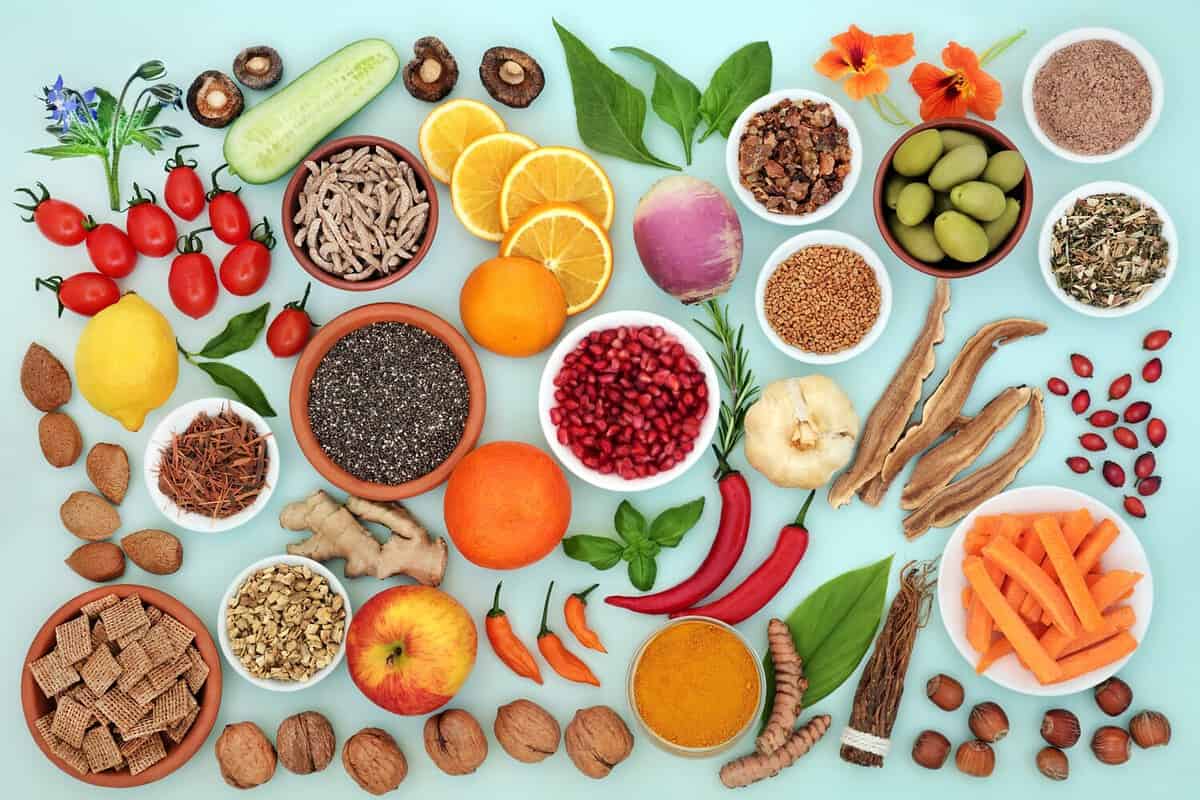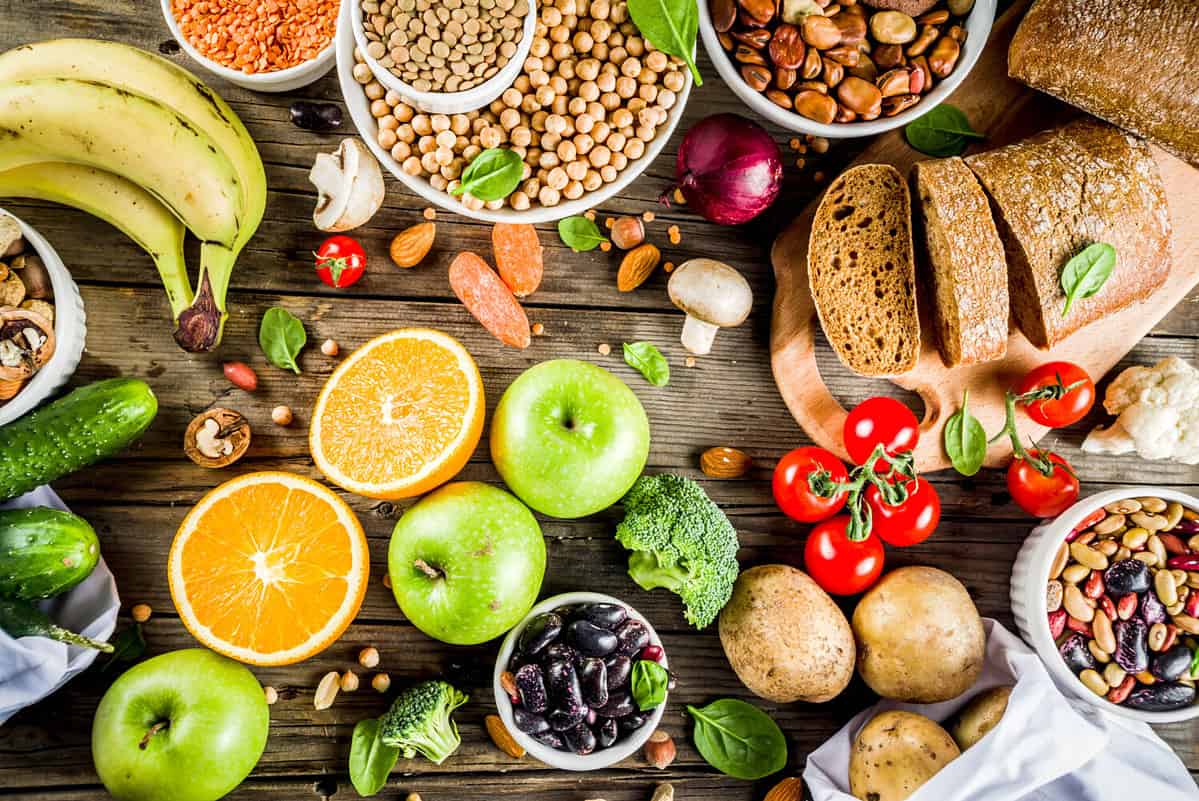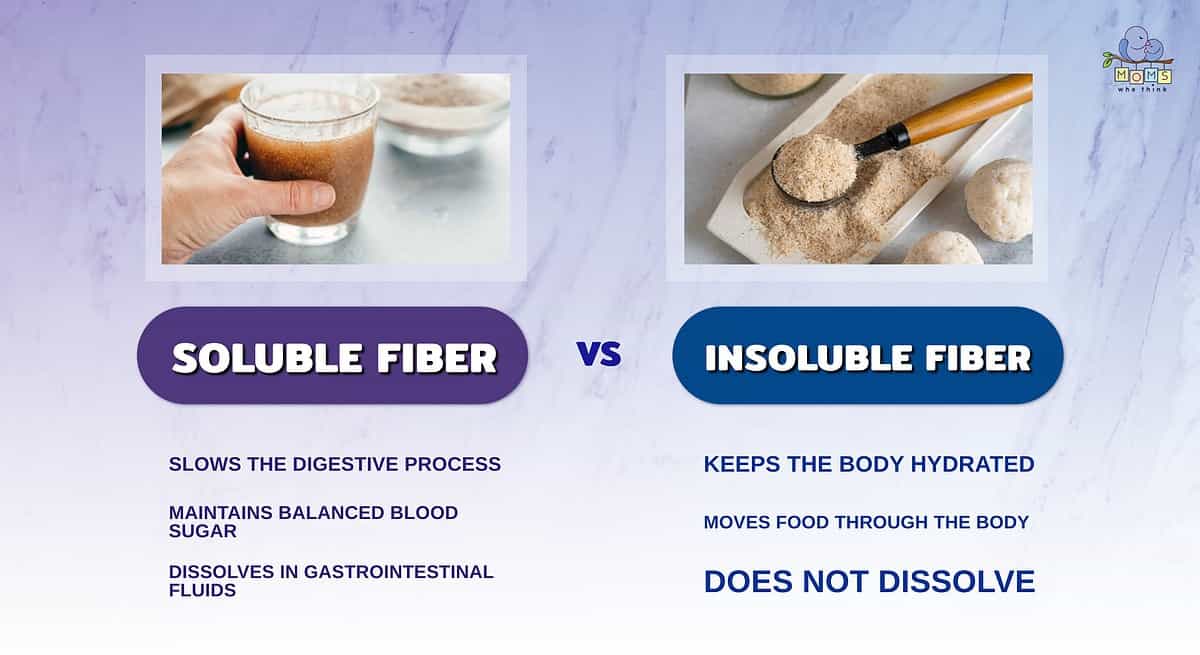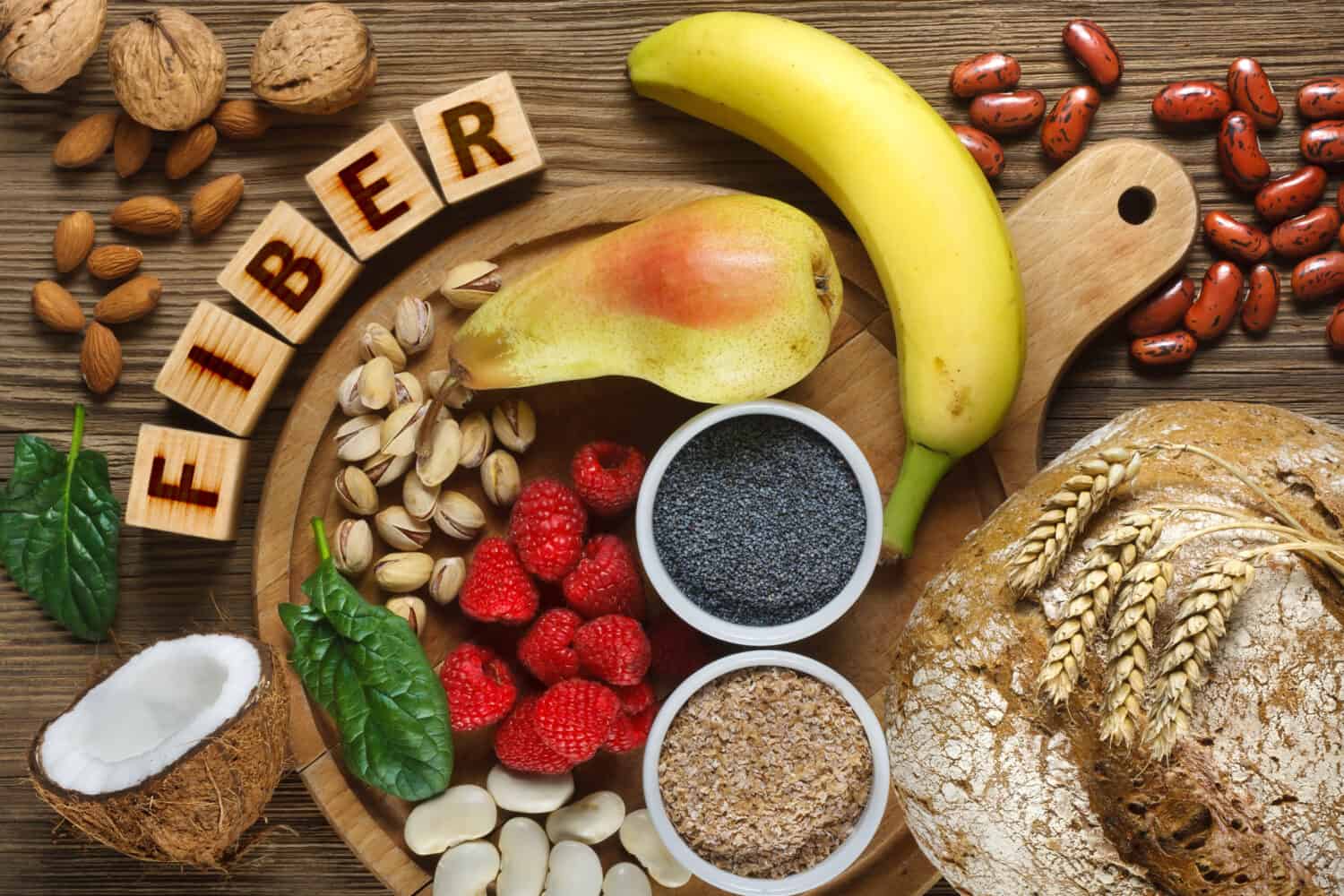Fiber is a necessary part of a healthy diet. It keeps the body functioning, aids digestion, helps lower cholesterol, regulates blood sugar levels, and aids in weight loss. It is important to get enough fiber in your diet. Accordion to the Dietary Guidelines for Americans, over 90% of adults do not get enough fiber in their diet. Getting more fiber requires paying attention to your diet and including more fiber-rich foods like fruits, vegetables, whole grains, legumes, nuts, and seeds. Fiber is an important form of carbohydrate that comes in two forms: soluble and insoluble. The body needs both soluble and insoluble fiber to maintain a healthy functioning system. When it comes to soluble fiber vs. insoluble fiber, it is important to understand their differences to ensure you are adding both to your daily diet. Some foods contain both soluble and insoluble fiber. The main difference between the two is that soluble fiber dissolves in the intensive, and insoluble fiber passes through the colon.
Soluble Fiber vs. Insoluble Fiber: Key Differences

Some fruits and vegetables have both soluble and insoluble fiber.
©marilyn barbone/Shutterstock.com
Soluble fiber slows the digestive process, so the body takes more time to digest and absorb glucose or sugar from foods. It helps the body maintain equilibrium with blood sugar and aids in maintaining overall balanced blood sugar and keeping it from spiking, and this is necessary for people who have diabetes. Insoluble fiber helps keep the body well hydrated and moves food through the body to prevent constipation and maintain regular bowel movements. Both types of fiber are important for maintaining a healthy body.
Both soluble and insoluble fiber are key to keeping the delicate balance in your gut. Research supports the idea that gut health affects other issues in the body, and maintaining a healthy gut can help with issues like hypertension, weight management, and cholesterol levels. And according to Harvard Health, the brain and the gut are closely connected and can affect each other positively and negatively. Gut issues and intestinal problems can be both the cause and product of stress, anxiety, and depression.
What is Soluble Fiber?
Soluble fiber dissolves in gastrointestinal fluids when it reaches the stomach and intestines. It turns into a thick gel-like fluid, and then bacteria in the large intestine digest it releasing gases.
Health Benefits of Soluble Fiber
Soluble fiber aids weight management because it turns into a gel and blocks fat absorption, which helps keep weight in check. It lowers cholesterol because it blocks cholesterol from being broken down and digested. Eating foods with soluble fiber slows the digestion rate and prevents spikes in blood sugar. This is especially important for those who live with diabetes. Overall soluble fiber reduces the risk of cardiovascular disease and lowers the risk of some cancers.
What is Insoluble Fiber?
Insoluble fiber moves through the digestive tract and does not dissolve. It is not digested and is released through bowel movements. Eating plenty of insoluble fiber adds bulk to the stool and aids in regulating the bowels.
Health Benefits of Insoluble Fiber
Insoluble fiber keeps the digestive system on track and foods moving through. It prevents constipation and hemorrhoids. Regular bowel movement can help lower the risk of colorectal cancer and diverticular disease.
Foods with Soluble Fiber
- Green beans
- Lentils
- Bananas
- Whole grains
- Flax seeds
- Sweet potatoes
- Cruciferous vegetables (broccoli, cabbage, cauliflower)
- Tofu
- Beans
- Carrots
- Corn
- Apples
- Peaches
Foods with Insoluble Fiber
- Whole wheat flour
- Wheat bran
- Brown rice
- Couscous
- Root vegetables
- Fruits with edible seeds like strawberries, kiwis, and raspberries
- Potatoes
- Celery
- Cucumbers
- Fruits and veggies with the skin on
Ways to Get More Fiber Into Your Daily Diet

Eating whole foods is the best way to add more fiber to your meals.
©Rimma Bondarenko/Shutterstock.com
A high-fiber diet is key to treating issues like constipation, diarrhea, and hemorrhoids. Many health professionals recommend patients eat a high-fiber diet to aid with IBS, diabetes, and inflammatory bowel disease. Ideally, people should get enough fiber through diet alone, filling up on healthy whole foods and avoiding processed foods.
- The must-have convenient reference guide for every home cook!
- Includes more than 8,000 substitutions for ingredients, cookware, and techniques.
- Save time and money on by avoiding trips to grab that "missing" ingredient you don't really need.
For some using high-fiber powders or pills is a simple solution to getting more dietary fiber. These are over-the-counter methods, but you should always talk to your doctor about adding health supplements to your diet.
Whether you need to get more fiber in your diet for health reasons or just to stay healthy, here are a few ways to add more fiber-rich food to your diet.
- Plan your meals and snacks.
- Cut fresh veggies and fruits to keep in the refrigerator for healthy snacks.
- Eat one meatless meal per week and replace the meat with protein-rich beans and legumes, and vitamin-rich vegetables.
- Make vegetable soup.
- Commit to learning one new healthy recipe each week.
- Eat more avocados.
- Keep fruit on the counter at eye level so you see it when craving something sweet.
- Eat whole grain bread and limit white flour.
While most adults don't get enough fiber, it's important not to overcorrect and eat too much fiber. Eating too much fiber, especially when adding more fiber to your diet, can cause issues like bloating and stomach cramps. So add more fiber slowly to your diet and drink plenty of water. And always consult with your medical professional before making any significant changes to your diet.
Soluble Fiber vs. Insoluble Fiber: Final Thoughts

Your gut health is very important, and soluble and insoluble fiber work to maintain the delicate balance in your gut. A healthy gut leads to less stress, anxiety, and depression. Making sure you're getting enough soluble and insoluble fiber is necessary for maintaining your overall health. Here are some differences between the two types of fiber.
- Soluble fiber helps the body maintain equilibrium with blood sugar.
- Insoluble fiber moves food through the body to prevent constipation and maintain regular bowel movements.
- Soluble fiber dissolves when it reaches the stomach and intestines.
- Insoluble fiber moves through the digestive tract and does not dissolve.

Broccoli Chicken Stir Fry
- Yield: 4 servings
Ingredients
- 1 pound boneless skinless chicken breasts, cut into 1 inch pieces
- 1 Tablespoon canola oil
- 2 cups fresh broccoli florets
- 1 small sweet red pepper, julienned
- 1 can (8 ounces) sliced water chestnuts, drained
- 1 package (6 ounces) frozen snow peas, thawed
- 1 small onion, cut into thin wedges
- 2 garlic cloves, minced
- 1/2 teaspoon Allspice
- 1 teaspoon ginger
- 1 1/2 cups chicken broth
- 1/4 cup soy sauce
- 2 Tablespoons cornstarch
- 2 Tablespoons cold water
- 4 cups hot cooked basmati rice
Instructions
- In a large nonstick skillet or wok, stir fry chicken in oil for 8 minutes or until lightly browned and juices run clear. Remove and keep warm.
- In the same skillet, stir fry the broccoli, red pepper, water chestnuts, snow peas, onion and garlic for 6 8 minutes or until crisp tender.
- Return chicken to the pan; sprinkle with Allspice and ginger.
- Stir in broth and soy sauce; bring to a boil.
- Combine cornstarch and cold water until smooth; gradually stir into skillet. Cook and stir for 2 minutes or until thickened. Serve with rice.
Nutrition
- Calories: 459
- Sodium: 504mg
- Fat: 6g
- Saturated Fat: 1g
- Carbohydrates: 65g
- Fiber: 6g
- Protein: 35g
- Cholesterol: 66mg
The image featured at the top of this post is ©Evan Lorne/Shutterstock.com


